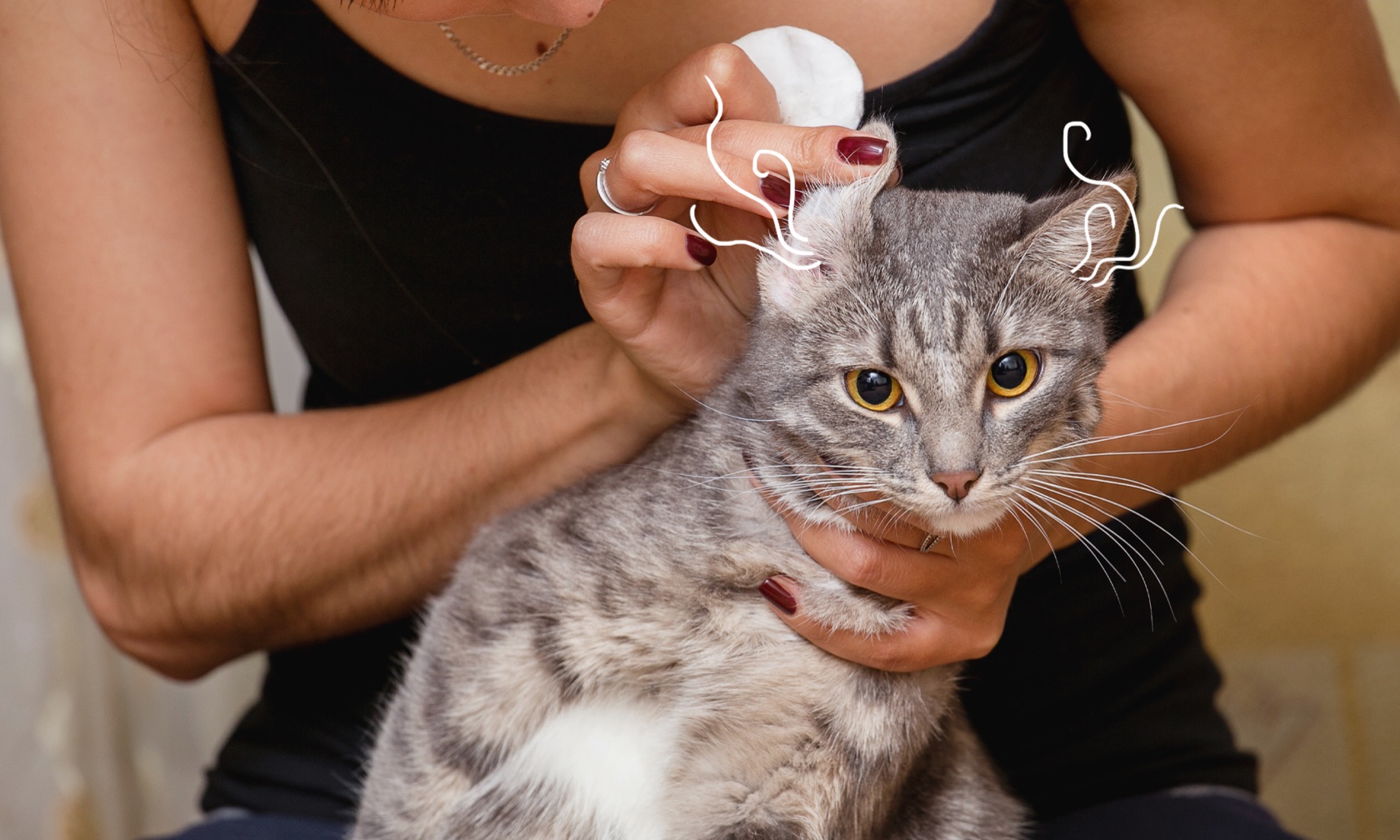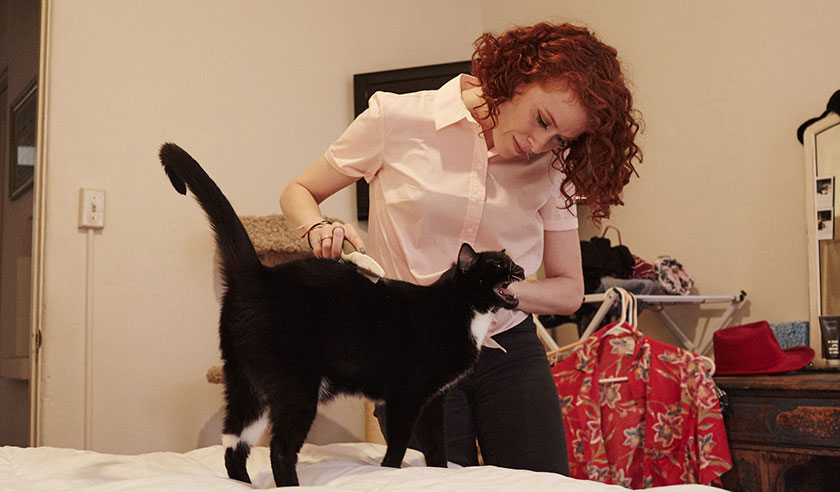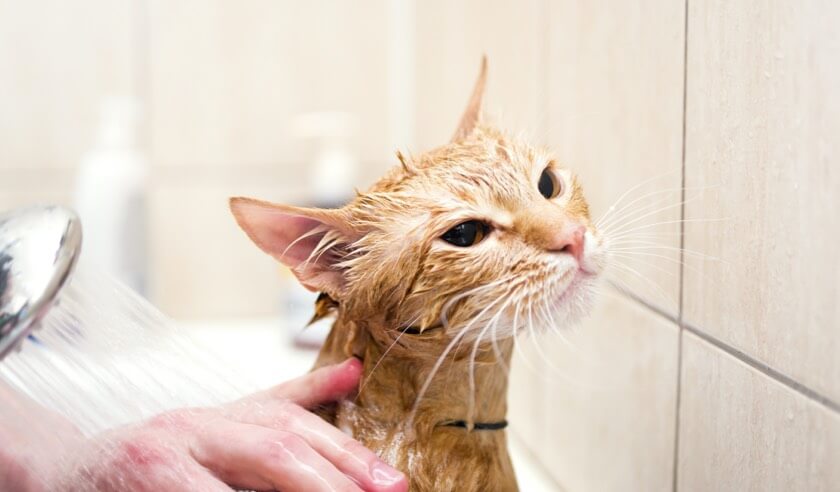Although cats are usually great at grooming themselves, they always appreciate being pampered by their owners. Additionally, staying up-to-date with grooming your cat, especially their ears, can help keep your cat healthy and happy.
However, cats do not need to have their ears cleaned regularly. Sometimes, your veterinarian may recommend cleaning your cat's ears if they have excess wax or a history of problems. If they recommend cleaning them, it is important to do it correctly. Here are a few easy tips to groom your cat at home.
Benefits of Grooming Your Cat
Cats are known for being very tidy groomers and normally do not need their ears cleaned. An occasional cleaning may be necessary to help keep an ear issue, such as an infection or mites, at bay. it's difficult for them to groom the insides of their ears. Because of this, your cat may need occasional ear cleanings to help keep issues like ear infections and ear mite infestations at bay.
How Do You Know If Your Cat’s Ears Need Cleaning?
If your cat is itching and scratching its head or ears, you need to see your veterinarian. They may have an infection or mites that need medication. Keep in mind that a small amount of wax is normal. Some breeds such as Rex, Sphinx and other hairless breeds may produce more wax. A change in the amount of wax may mean that your cat has a problem, so ask your veterinarian about the changes.
What You’ll Need To Clean Your Cat’s Ears
Cleaning your cat's ears will likely take some practice, but these at-home cleanings can actually be quite easy. Please do not clean your cat's ears if they are anxious or fighting you to try to clean them. Here's what you'll need to begin:

- Ear Cleaning Solution
This is very important, since putting the wrong solution into your cat’s ears could lead to deafness, balance problems, or other issues. Ask your veterinarian for a recommendation. - Cotton Ball
Use a cotton ball to clean, wipe, and dry the inside of your cat’s ears. You can pick up cotton ball squares at most human pharmacies. You can also use cotton balls, cotton makeup rounds, or even a tissue. Just don’t use cotton swabs to clean out your cat’s ears, as you could damage their eardrums. - A Towel
You can gently wrap your cat in the towel in a “purrito”, but remember – less is better in terms of restraint. Having a towel on-hand is also useful for drying surfaces after your cat shakes the solution out of their ears. - A Partner
Depending on your cat, it may be easier for a second person to hold your cat while you clean their ears. - Treats
Offer treats throughout the process to reward your cat and help them have a positive association with ear cleanings.
Steps for Cleaning Your Cat’s Ears
If there isn’t too much debris in the ears and your veterinarian has cleaned the ear initially, you can begin cleaning your cat’s ears.

Sit in a comfortable position and hold your cat in your lap.
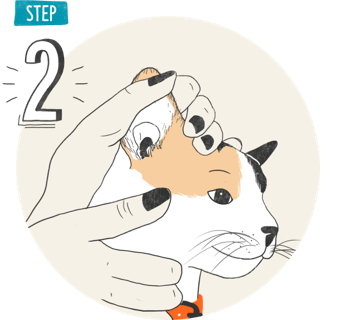
Grasp the tip of their ear flap and gently pull it back.
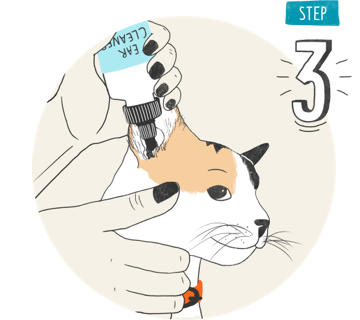
“Flood” the ear with solution – you should squeeze in enough to fill the ear canal (some may even spill out).
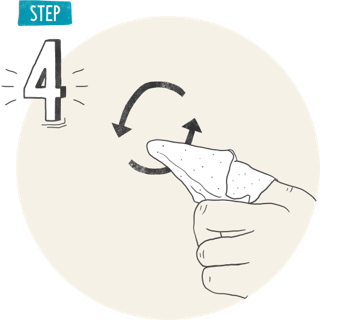
Massage the base of the ear for 5–10 seconds with your finger wrapped in a cotton ball to allow the cleaning solution to work. Allow your cat to shake their head to get out any of the excess solution.

Wrap a dry cotton ball around your finger and gently wipe the excess liquid or debris out of the ear canal.
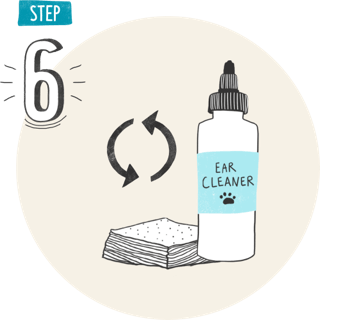
Repeat with your cat’s other ear.
While it may take some time to get your cat used to having their ears cleaned, with the right supplies, patience, and gentle handling, you can help them keep their ears clean at home (and save yourself some time in the process). If you notice any blisters or red spots after cleaning the ear, please tell your veterinarian. Your cat may be sensitive to this type of clean.
ZPC-00206R3
